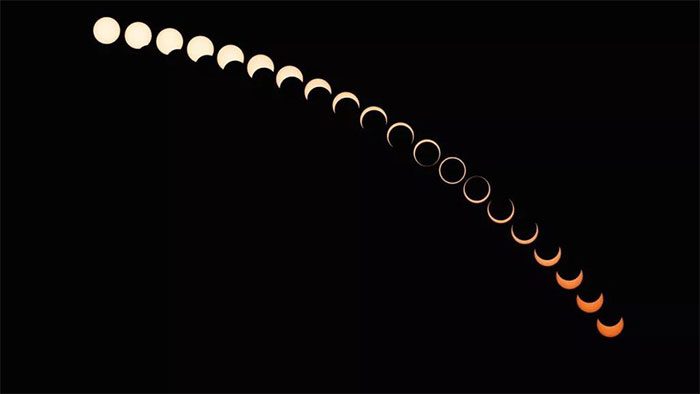On Thursday, June 10, the first solar eclipse of the year will occur, with the Moon nearly completely covering the Sun, leaving only a fiery ring visible from Earth.
A solar eclipse happens when the Moon moves between the Earth and the Sun, blocking a part or nearly all of the Sun’s light. During an annular eclipse, the Moon is too far from the Earth to completely cover the Sun, making it appear smaller. Instead, as the Moon passes in front of the Sun, the outer edges of the Sun remain visible from Earth in the form of a ring, or annulus.

Annular solar eclipse in 2010.
The annular solar eclipse will last about 100 minutes, starting at sunrise in Ontario, Canada, and moving north until the peak of the eclipse occurs at approximately 8:41 AM local time in Greenland (around 11:41 GMT), ending at sunset in northeastern Siberia. The “ring of fire” phase, when the Moon covers 89% of the Sun, will last up to 3 minutes and 51 seconds at any point along this path.
In areas not along the path of the eclipse, observers will see a partial eclipse, weather permitting.
In these regions, a portion of the outer shadow of the Moon, known as the penumbra, will cover the Sun. As the Moon moves in front of the Sun, it will look like a bite has been taken out of the bright star.
For viewers in the United States, the best time to observe is just before, during, and immediately after sunrise, depending on your location, especially if you are in the Southeast, Northeast, Midwest, or northern Alaska.
In other words, make sure you have a clear view of the horizon as the Sun attempts to greet the new day while being partially blocked by the Moon.
In the United Kingdom and Ireland, sky watchers will see up to 38% of the Sun obscured during the partial eclipse shortly after 11 AM local time.
Since this eclipse will not be a total eclipse, you should not look directly at it, even if you are wearing sunglasses. Instead, you will need special solar viewing glasses or other tools, such as a homemade solar viewer or even a colander or spaghetti strainer, which will show the shadow of the partial eclipse if you allow sunlight to shine through its holes onto the ground or another surface.
If you miss this eclipse, you still have another opportunity this year. The second and final eclipse of 2021 will occur on December 4. Although the total eclipse will only be visible from Antarctica, people in southern Africa, including Namibia and South Africa, may catch a glimpse of the partial eclipse.





















































